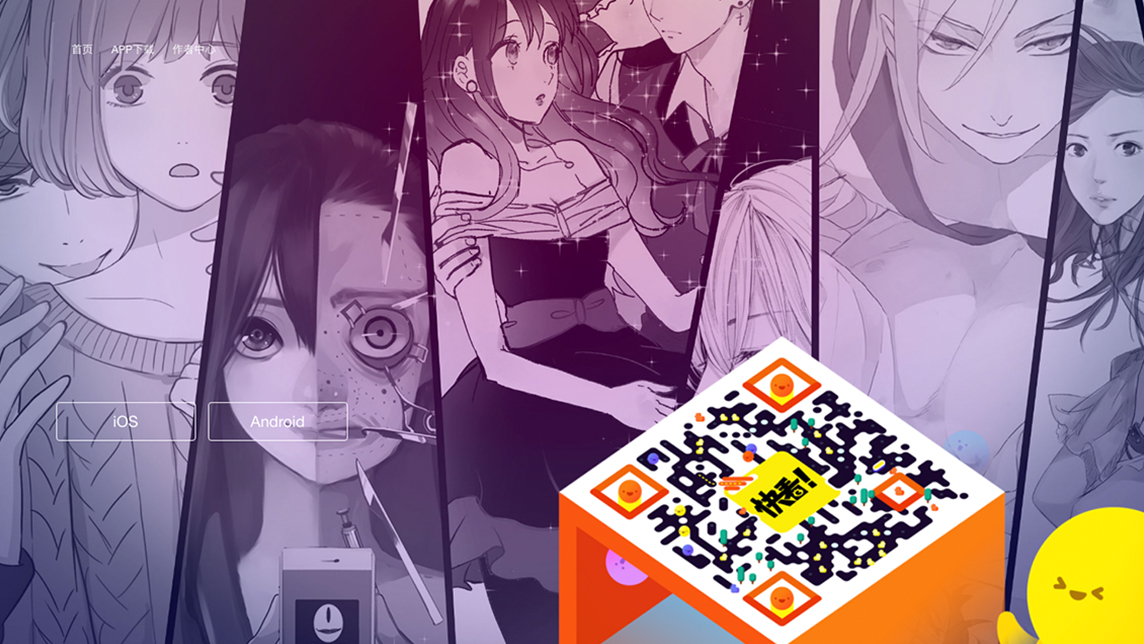If you look through the apps on a Chinese teenager’s phone, there’s a good chance you’ll find one called Kuaikan Comic.
Kuaikan Comic was founded in 2014. Unlike many prior Chinese comic platforms, the startup provides mainly original mobile-friendly Chinese comics. Kuaikan Comic has gained 130 million users in less than four years, most of whom are Chinese teens born after 1995.
Investors have noticed. Kuaikan Comic recently secured US$177 million in Series D funding led by Coatue Management.
With 10 million daily active users and a 1.34% weekly market penetration rate, Kuaikan Comic has become the top comic platform in China.
Understand your audience
In 2014, when Kuaikan Comic was founded, few investors were interested in comics, and especially not in Chinese comics.
Instead, comic platforms were fighting over the rights to major Japanese comics. In early 2013, Tencent Animation & Comics, Kuaikan Comic’s biggest competitor, bought the rights to 11 popular Japanese comics, including One Piece and Naruto.
The widely held belief was that Chinese comic readers were not loyal to comic platforms, but rather to specific comics, particularly the ones they had grown up reading. Companies like Tencent believed whichever platform owned the most popular Japanese comics would gain the largest market share.
And because Tencent is such a powerhouse, everyone predicted its platform would be the biggest in China.
This assumption turned out only to be half true. Those anticipating Tencent’s dominance couldn’t see the complete picture. While people do tend to prefer the comics they read as children, not everyone in China grew up on Japanese comics.
Chinese teens born after 1995 grew up in the mobile age. Instead of watching Japanese anime on TV like ’80s babies, the children of the mid-’90s first read comics on Weibo (the Chinese version of Twitter, which has around 367 million users), where many Chinese artists would post comic strips about their daily lives or fictional stories.
Chen Anni understood the new Chinese comic market.
As a college student, Chen started to draw comics about her high school boyfriend and their love story. Though her comics were composed only of simple lines and minimalistic background images, her love story resonated with almost a million followers.
After graduation, Chen started Kuaikan Comic even though no venture capital firm would back her. She financed the launch of Kuaikan Comic platform version 1.0 with just her own savings and seed investment from a friend. The only advertisement for her startup was a comic she published on Weibo called The 1% Life.
Her gamble paid off. Her comic was reposted on Weibo over 340,000 times. Days later Kuaikan Comic received US$3 million in Series A funding from Sequoia Capital China.
History repeats itself
If comics are this generation’s novels, Kuaikan Comic is this generation’s China Literature Limited.
China Literature Limited publishes books online. Many of its books feature Mary Sue or plot armor stories. Commentators considered the literature platform in bad taste, but young people born in the ’80s and ’90s devoured the online books.
China Literature Limited was listed on the Hong Kong Stock Exchange in 2017. Writing online literature became so lucrative that tens of millions of people became writers.
But the cost of mobile data has dropped significantly, and many teens born after 1995 – a demographic that makes up 95% of comic readers – opt for mobile comics instead of online literature.
A popular comic artist herself, Chen set up a team at Kuaikan Comic that knows what today’s teens like and how to target users to push the comics.
Kuaikan Comic started by signing comic artists on Weibo, which turned their fans into Kuaikan Comic app users. After the app got popular, the startup continued to push its comic IP. The team posted attractive comic strips on its own Weibo accounts.
Each summer vacation, when teenagers have more free time, Kuaikan Comic holds special events such as live streaming interviews with popular comic artists and book signings.
Kuaikan Comic also created an online community on the app that lets users interact with their favorite comic artists and editors.
Not without its challenges
Unfortunately, Kuaikan Comic has not only experienced similar success to China Literature Limited, it has also faced some of the same challenges.
The most pressing challenge is that the content on Kuaikan Comic is not diverse enough for its fast-growing user base. Original Chinese comics only recently became popular, so the market is still immature. Chen’s current top priority is finding new and different content.
Drawing comics is considered a “not serious” job in China, and most people think only the top artists find money and fame. Kuaikan Comic is striving to change that perception.
It plans to use its Series D funding to set up a RMB 500 million fund to aid talented comic artists, which includes providing them with benefits such as healthcare.
Kuaikan Comic is also working on its own content. Its self-made content is primarily created by editors who understand well the platform’s users.
The business model of Kuaikan Comic is still in progress: the startup currently earns money through paid subscriptions, games, advertisements and e-commerce. Kuaikan Comic is also trying its hand at making movies and animated series, but whether they will turn a profit remains to be seen.
Chen is not in a hurry. In a 2017 interview she said, “We are currently trying to find the best business model for the company; our current attempts at commercialization are in pursuit of this goal. Our objective at this stage is to nurture good artists and find the best way to create quality content.”
If Kuaikan Comic continues to follow in the footsteps of China Literature Limited, more people will join the comic industry, better content will surface and, eventually, selling the rights to the startup’s IP will generate huge profits.
But the question remains: Can Kuaikan Comic retain its users during the years it needs to develop and become the next billion-dollar business? Time will tell.













